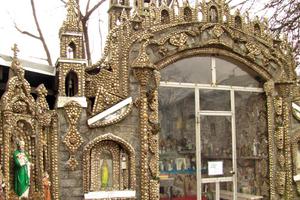The Tangled Web We Weave When We Artificially Conceive

The Solomonic Dilemma of ‘Leftover’ Frozen Embryos
I have acquaintances that a decade ago decided to adopt some “leftover” frozen human embryos created with in vitro fertilization (IVF). Presuming they were essentially adopting children, the couple first consulted an adoption attorney. Imagine their surprise when he referred them to a property-rights lawyer. In our state, human embryos are considered to be “property,” not people.
Back in 2002, a Rand Corp. report revealed that there were 396,526 frozen embryos in the United States. There are certainly many more today, and in many states, these little lives have no more legal worth than a house or a car.
This situation where we can legally own human life is a direct result of creating life outside of the body — outside of the loving embrace of husband and wife. Once human life is created in a laboratory, in bulk, ownership is suddenly an issue.
So who owns human embryos once they are created? The people who commissioned their existence. But what happens when those people disagree on how to dispose of their “property”?
Such a dispute has recently hit the headlines. Nick Loeb, an American businessman, and Sofia Vergara, an actress known for the T.V. show Modern Family, are locked in a legal battle over two female embryos the couple created together when they were engaged to be married. They created four embryos, with the intent of using surrogates to bring their children to term. Two attempts at impregnating surrogates failed. The couple then split up, leaving the lives of the last two girls in limbo.
Vergara is now engaged to another man, and she wants the embryos left frozen. Loeb desperately wants a family and has offered to take complete financial and legal responsibility to hire a surrogate and raise the girls on his own.
The contract they drafted stipulated what should happen in the event that either Loeb or Vergara died — the embryos would be destroyed — but not if the relationship dissolved. The lives of these two girls are now in the hands of the legal system, where past cases have more often sided with the party who does not want to continue his or her obligations as the parent.
Loeb wrote an opinion piece, titled “Frozen Embryos Have a Right to Live,” in The New York Times that poses some relevant questions. He asks: When we create embryos for the purpose of life, should we not define them as life, rather than as property? Does one person’s desire to avoid biological parenthood (free of any legal obligations) outweigh another’s religious beliefs in the sanctity of life and desire to be a parent? A woman is entitled to bring a pregnancy to term even if the man objects. Shouldn’t a man who is willing to take on all parental responsibilities be similarly entitled to bring his embryos to term, even if the woman objects?
These are issues that, unlike abortion, have nothing to do with rights over one’s own body and everything to do with a parent’s right to protect the life of his or her unborn child.
Supporters of Vergara argue that Loeb will lose because he cannot force her to be a parent when she does not want to be one. This is twisted logic, born of our abortion-on-demand mentality. Vergara is already a parent of these embryos. She freely chose to reproduce. Her offspring already exist. If they did not, there would be nothing to argue about.
Ironically, Vergara identifies as Catholic and Loeb, who is Jewish by birth but baptized Episcopalian, was raised by a Catholic nanny. He says he was influenced by Catholicism more than any other religion. Had either Loeb or Vergara consulted the teachings of the Church, however, they wouldn’t be in their current predicament.
Prominent Catholic theologians disagree on what we should do with the frozen embryos. They all agree these little human lives should’ve never been made in a lab and frozen in the first place. Many say the best outcome would be for Vergara and Loeb to reconcile, marry and for Vergara to carry her own children to term. With the public acrimony between the two, however, this seems unlikely.
So what should be done? If Vergara wins, these girls will never get a chance at finishing their lives. If Loeb wins, he will have to hire a surrogate to bring them to term. Surrogacy in itself poses ethical dilemmas, however, because a woman is contracted to give birth to a child she is expected to hand over at birth. The surrogate mother is treated as a biological commodity, as an instrument to gestate a child for money.
The situation is untenable: the very moral conundrum the Church has been trying to warn us about for decades. Richard Doerflinger, associate director of the U.S. bishops’ Secretariat of Pro-Life Activities, says the Vergara-Loeb dispute “may be a problem for which there is no fully acceptable solution.”
Loeb and Vergara are not alone. Many couples desperate to have a family turn to IVF. When they are faced with the “extra” lives they’ve created, and for which they have no plan, heartbreak ensues. These parents know their embryos are more than just property. The embryos are their children, so giving them to another couple, donating them to be destroyed in research or leaving them frozen forever are unacceptable options.
A few years ago, The Boston Globe dedicated a whole piece entitled “The Maybe-Baby Dilemma” to the problem of the “leftover” embryos. It’s clear many couples are stuck in a difficult situation for which there seems “no fully acceptable solution.”
Audra Murray, a Catholic, and her husband are struggling with what to do with their two “leftover” embryos. Murray told the Globe, “When pregnancy test after pregnancy test has failed, you don’t feel like you can get pregnant and you’re trying to, and watching your bank account draining, you’re not concerned about the embryos.”
“But then you have kids,” she says, “and the embryos seem like kids.”
The Globe also interviewed another Catholic, Linda, whose family encouraged her to throw away her frozen embryos after she had twins with IVF. Linda said she couldn’t discard them because when she looked at her twins she realized that it could just have easily been them still stuck in the freezer.
One anonymous Catholic couple shared their IVF heartbreak on The Practicing Catholic blog. They desired so badly to have children that they turned to IVF. Of their decision, they wrote, “We didn’t seek to understand the Church’s teaching on IVF or, more importantly, what consequences could develop once initiated.” The couple created several embryos. But after the first pregnancy, the mother had to have an emergency hysterectomy. Now, they cannot save their other children from a life on ice without hiring a surrogate. Their pain is palpable, and they describe it as a cross they must now carry.
It seems that the Walter Scott quote about deception needs an update for a new age: Oh, what a tangled web we weave when we artificially conceive.
After all, there are alternative treatments for infertility that do not require embryos to be created in a lab and then relegated to an existence as someone’s property. NaPro Technology (Natural Procreative Technology) is an ethical way to treat infertility. Developed by Dr. Thomas Hilgers, NaPro Technology focuses on a woman’s reproductive health and “provides medical and surgical treatments that cooperate completely with the reproductive system.”
Thirty years of studying hormonal changes in a woman’s cycle and the underlying causes of infertility have culminated in an alternative way to treat infertility that does not create life outside of the body. NaPro Technology has great results as well. Couples who’ve failed with IVF have succeeded with NaPro Technology, and since it treats the underlying cause of infertility, it allows for couples to get pregnant again and again.
Today, it’s very easy to forget the moral issues with IVF, especially when we see the adorable face of an IVF success story. There is no doubt that new life is beautiful and compelling.
But we cannot continue to ignore the injustice borne by the embryos who aren’t lucky enough to make it into their mother’s wombs. Considered property, not people, many of these frozen embryos continue to be stuck in a very tangled web indeed.
Rebecca Taylor is a clinical laboratory specialist in molecular biology. She writes about bioethics on her blog, Mary Meets Dolly.
- Keywords:
- July 12-25, 2015
















